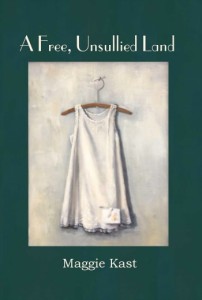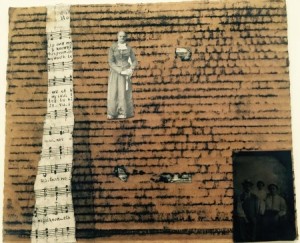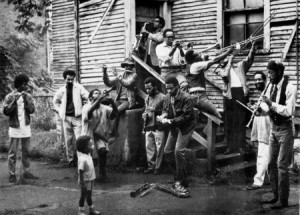
The following is a guest post by Maggie Kast, author of A Free, Unsullied Land. If you would like to write a guest post on my blog, please send me an e-mail at contact@cecilesune.com.
I enter Chicago’s Museum of Contemporary Art and am surprised by the beat of tapping feet four floors above, as dancers from the Chicago Human Rhythm Project perform on a stage built from discarded public school desks and tables, all part of the exhibit. The beat resounds throughout the museum, and I’m glad to hear this lively sound in the Museum’s normally staid and hushed halls. I’ve come to see the Freedom Principle, an exhibit of the art and music of the AACM, the fifty-year-old Association for the Advancement of Creative Musicians, a group of loosely allied, African-American players of progressive jazz.
If a museum can jazz up its shows, can literary fiction do the same? The Book of Strange New Things, Michel Faber’s bestseller, is both literary and science fiction. The author asks, “Where is the dishonour in writing something your mum is going to love, and your mum not being Virginia Woolf?” Some time ago writer Ursula Leguin bemoaned the division between “genre” and “literary” fiction, defending Michel Chabon’s use of alternative history in The Yiddish Policeman’s Union. Chabon posits a settlement for Jewish refugees founded in Sitka Alaska in 1941 and the destruction of the state of Israel in 1948. As with Faber, some reviewers pigeon-holed the book as “science fiction” and thus not “literary.” Leguin’s defense of Chabon is a hilarious satire on those who look down on “genre.”

The Freedom Principle show, subtitled Experiments in Art and Music, moves from documentation of the art of the black avant-garde in the ‘60s to recent work that continues the conversation. In my new novel, A Free, Unsullied Land, which takes place in Chicago, 1930, I have tried to establish a similar dialogue between past and present, hoping to keep the beat alive. My protagonist, Henriette, discovers jazz in the predominantly black clubs of Chicago’s South side just as this music is making its way to Chicago from the South. Along with jazz comes news of nine young African-American men, soon to be known as the Scottsboro Boys. Accused of raping two white women, they are unfairly tried, convicted and sentenced to death in less than twelve days. Today’s reader will hear and see the precursors of Ferguson, Baltimore and Texas echoing through these events and may also see early signs of the Civil Rights movement, as blacks and whites march in protest together for the first time since the enactment of legal segregation. Henriette marches with them.

The Freedom Principle mixes disciplines: art, dance, music, as well as other genres. One piece is an installation, an assembly of musical instruments. Some examples of traditional art on walls are actually musical scores. So how can we writers make literary fiction something your mum might love, since she is surely not Virginia Woolf?
Graphic novels, mixed genre writing, interactive online writing and other experiments all offer possibilities. And the principles of the AACM: experimentation, improvisation, collective action, and the search for freedom, would not be a bad place to start. Do these images from the exhibit give you any ideas? The beat goes on.
About the author and her work: Maggie Kast’s Website.
